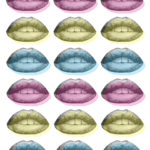
Actinic cheilitis is a potentially malignant lesion affecting the lips, typically the lower lip as a result of long-term exposure to sunlight. It is more frequently seen in males over the age of 40 in individuals who work outside. The initial presentation is one of a dry, cracked lip with no pain but evolves to become severely dry with areas showing deep lines and an exfoliative aspect, keratotic plaques and ulcers may form. Atrophic or acanthotic, hyperkeratosis or hyperparakeratosis may be seen histologically with different degrees of dysplasia. A number of treatment options ranging from topical anti-inflammatories to surgical removal of the affected lip (vermilionectomy) have been employed but there is no consensus on the best treatment option.
The aim of this review was to evaluate the best treatment for actinic cheilitis.
Methods
Searches were conducted in the Medline, Embase, Cochrane Library and BIREME databases. Observational studies, case series, clinical trials, and cohort studies of therapeutic interventions for actinic cheilitis were considered. Studies performed before 1980 and case series with fewer than 5 patients were excluded.
Two reviewers independently selected studies extracted data and assessed risk of bias. The risk of bias assessment used the criteria, patient selection (randomisation), blinding for treatment, blinding for assessment and statistical analysis. Findings were grouped according to treatment employed, laser therapy, chemotherapy agents, surgical treatment, and application of anti-inflammatory agents
Results
- 29 studies were included
- 27 out of the 29 studies were considered to be at high risk of bias.
- Only 2 of the included studies were randomised controlled trials.
- 19 studies involved the use of lasers, 7 chemotherapeutic treatments, 6 surgical treatments and 2 studies considered anti-inflammatory agents.
- Clinically, photodynamic therapy showed positive results, with improvement in up to 100% of the patients; however, histopathological improvement varied greatly, from 16 to 100%.
- Of the chemotherapeutic agents assessed, imiquimod showed the best results: clinical improvement in 80 to 100% of the patients, and histopathological improvement in 73 to 100%.
- The main focus of the surgical studies was the search for the best technique, rather than the cure of AC.
- The 2 studies of anti-inflammatory agents have small samples providing limited results.
Conclusions
The authors concluded: –
determining the best therapy to treat actinic cheilitis lesions is still a subject of debate, and randomised clinical trials are necessary to provide more robust evidence. Future studies should focus more specifically on the relevance of histopathological alterations when treating potentially malignant disorders as actinic cheilitis.
Comments
The reviewers have searched a number of major databases to address this question. Because a broad range of studies designs have been included a good number of clinical studies have been identified. However, as the authors highlight only 2 of the 29 studies included are randomised controlled trials. Consequently, this is very little evidence on which to base decisions about the best available treatment. In addition to the lack of evidence regarding treatment effectiveness the authors also highlight that side effects were reported for all treatments. The authors also highlight that few of the studies report the impact of the treatment on the histological findings. The average follow up period of the included studies was 40 weeks which is probably insufficient to assess this. A recent review ( Dental Elf – 8th Aug 2018) suggested that the prevalence of actinic cheilitis was 2.08% (95%CI; 0.94-3.67%) and while reduction in outdoor working in many countries is likely to lead to a reduction there is still a need for high quality well reported studies to identify the best treatment or combination of treatments for this potentially malignant condition.
Links
Primary Paper
Salgueiro AP, de Jesus LH, de Souza IF, Rados PV, Visioli F. Treatment of actinic cheilitis: a systematic review. Clin Oral Investig. 2019 May;23(5):2041-2053. doi: 10.1007/s00784-019-02895-z. Epub 2019 Apr 23. Review. PubMed PMID: 31011833.
Other references
Dental Elf – 8th Aug 2018
Picture Credits
“Lips poster design” by Shannen Jalal is licensed under CC BY-NC 4.0
